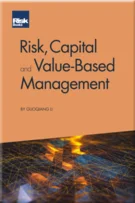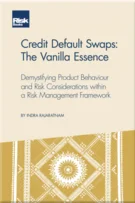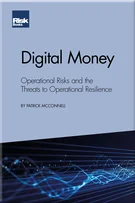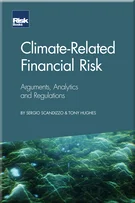How to Obtain a Credit Rating
How to Obtain a Credit Rating
Foreword
Introduction
Theory and Practice of Corporate Risk Management
Theory and Practice of Optimal Capital Structure
Introduction to Funding and Capital Structure
How to Obtain a Credit Rating
Refinancing Risk and Optimal Debt Maturity
Optimal Cash Position
Optimal Leverage
Introduction to Interest Rate and Inflation Risks
How to Develop an Interest Rate Risk Management Policy
How to Improve Your Fixed-Floating Mix and Duration
Interest Rates: The Most Efficient Hedging Product
Do You Need Inflation-linked Debt?
Prehedging Interest Rate Risk
Pension Fund Asset and Liability Management
Introduction to Currency Risk
How to Develop Currency Risk Management Policy
Translation or Transaction: Netting Currency Risks
Early Warning Signals
How to Hedge High Carry Currencies
Currency Risk on Covenants
Optimal Currency Composition of Debt 1: Protect Book Value
Optimal Currency Composition of Debt 2: Protect Leverage
Cyclicality of Currencies and Use of Options to Manage Credit Utilisation
Managing the Depegging Risk
Currency Risk in Luxury Goods
Introduction to Credit Risk
Counterparty Risk Methodology
Counterparty Risk Protection
Optimal Deposit Composition
Prehedging Credit Risk
xVA Optimisation
Introduction to M&A-related Risks
Risk Management for M&A
Deal-contingent Hedging
Introduction to Commodity Risk
Managing Commodity-linked Revenues and Currency Risk
Managing Commodity-linked Costs and Currency Risk
Commodity Input and Resulting Currency Risk
Offsetting Carbon Emissions
Introduction to Equity Risk
Hedging Dilution Risk
Hedging Deferred Compensation
Stake-building
Two main sources of debt financing in the capital markets are bank lending and the issuance of bonds to investors. Bank lending is a very competitive business and often a cheap funding source. It also offers flexibility in terms of the speed of drawing on a loan and its repayment. Nevertheless, companies that require a lot of debt usually fund themselves mostly through bond issuance, since they can reach more investors that way and the maximum maturity is longer, which reduces the refinancing risk. However, bond investors commonly require the issuer to obtain a credit rating from one of the three major credit rating agencies: Moody’s, Standard & Poor’s or Fitch.
This chapter will describe the typical steps through which a bond issuer goes to obtain a first credit rating. As time goes on the rating may change, and to a certain extent the ongoing communication with rating agencies would follow similar lines as during the initial credit rating.
BACKGROUND
The Middle Eastern Holding Company (MEHC) has a number of majority owned and diverse operating businesses, both in the Middle East and outside the region. In addition, it has a very significant investment portfolio, strategic
Copyright Infopro Digital Limited. All rights reserved.
As outlined in our terms and conditions, https://www.infopro-digital.com/terms-and-conditions/subscriptions/ (point 2.4), printing is limited to a single copy.
If you would like to purchase additional rights please email info@risk.net
Copyright Infopro Digital Limited. All rights reserved.
You may share this content using our article tools. As outlined in our terms and conditions, https://www.infopro-digital.com/terms-and-conditions/subscriptions/ (clause 2.4), an Authorised User may only make one copy of the materials for their own personal use. You must also comply with the restrictions in clause 2.5.
If you would like to purchase additional rights please email info@risk.net









